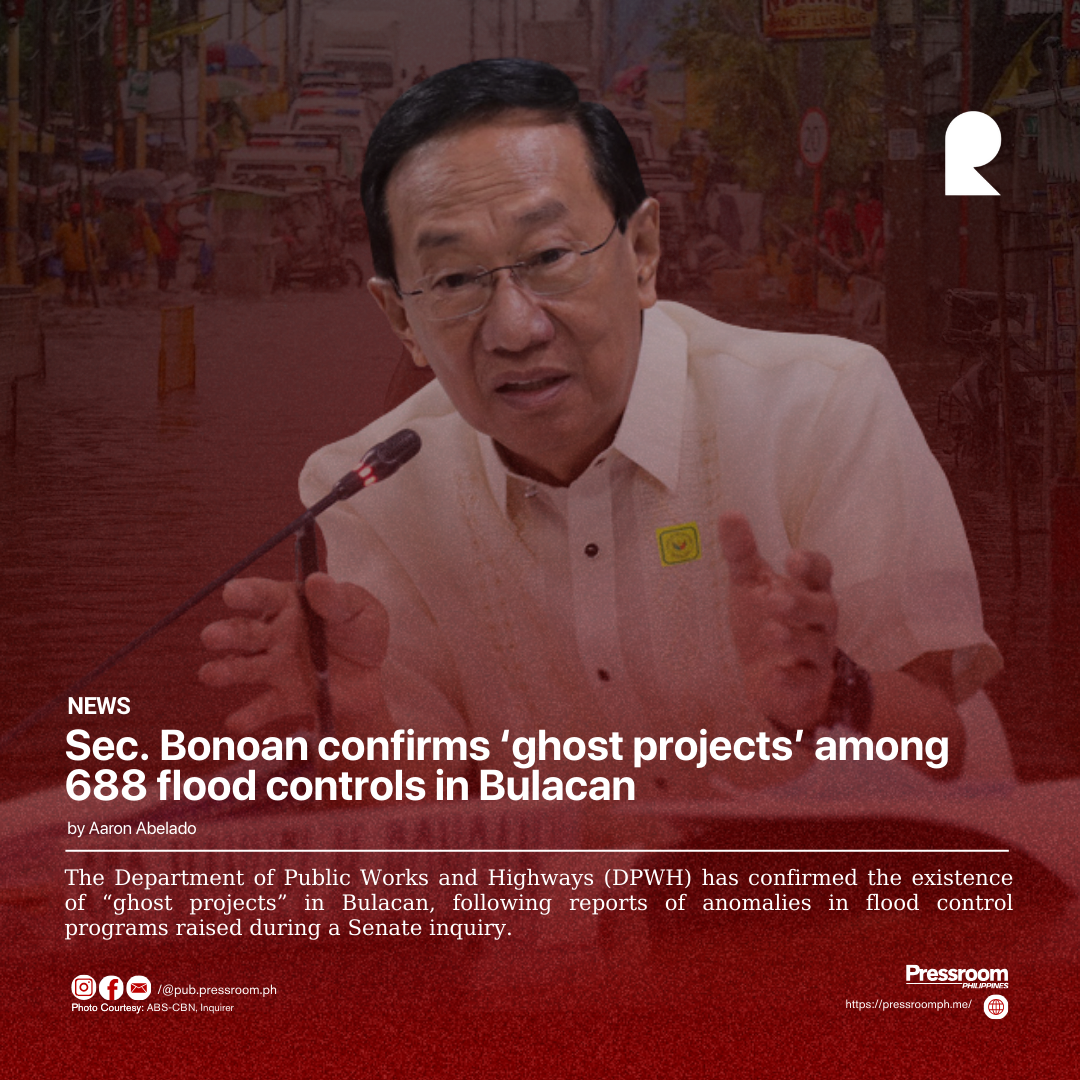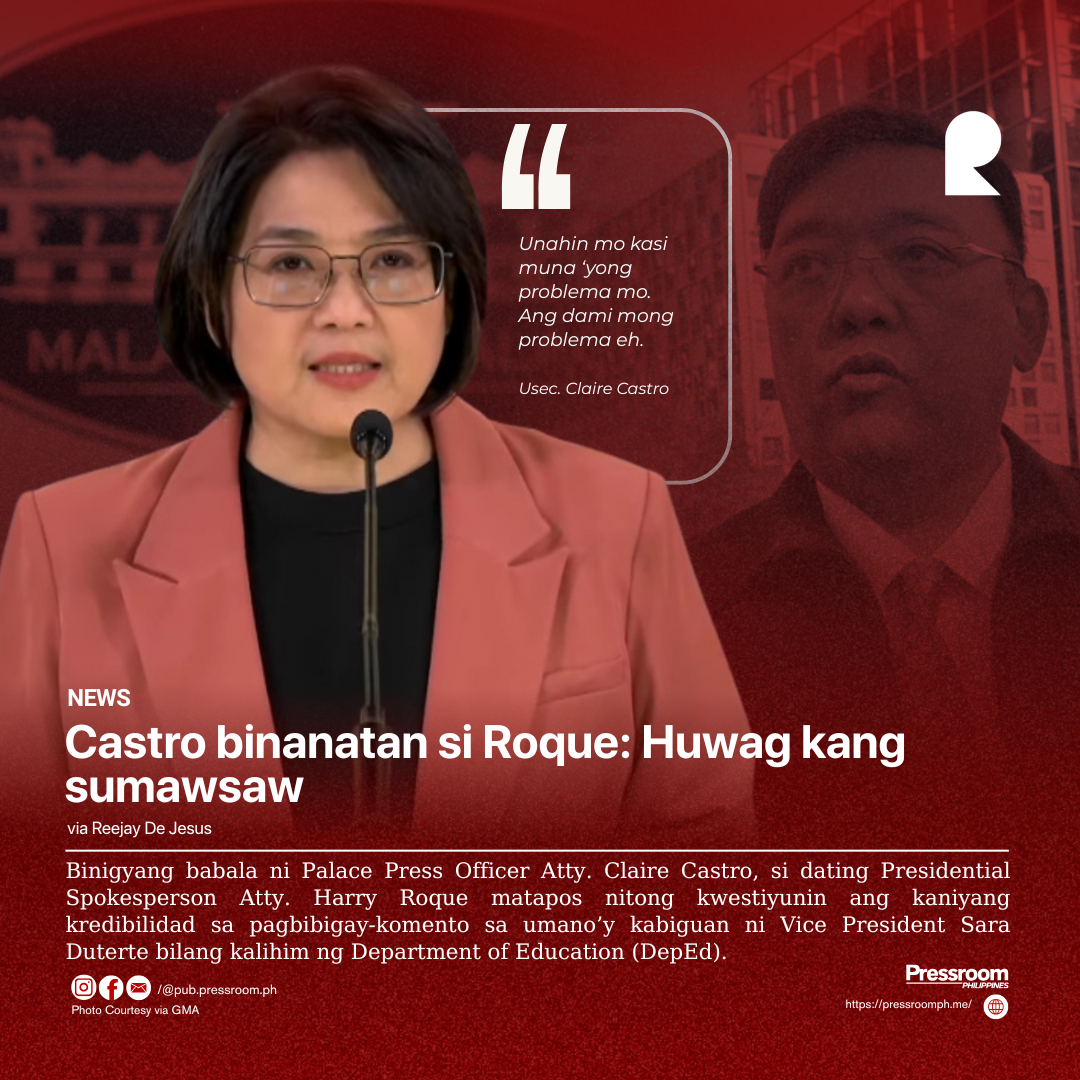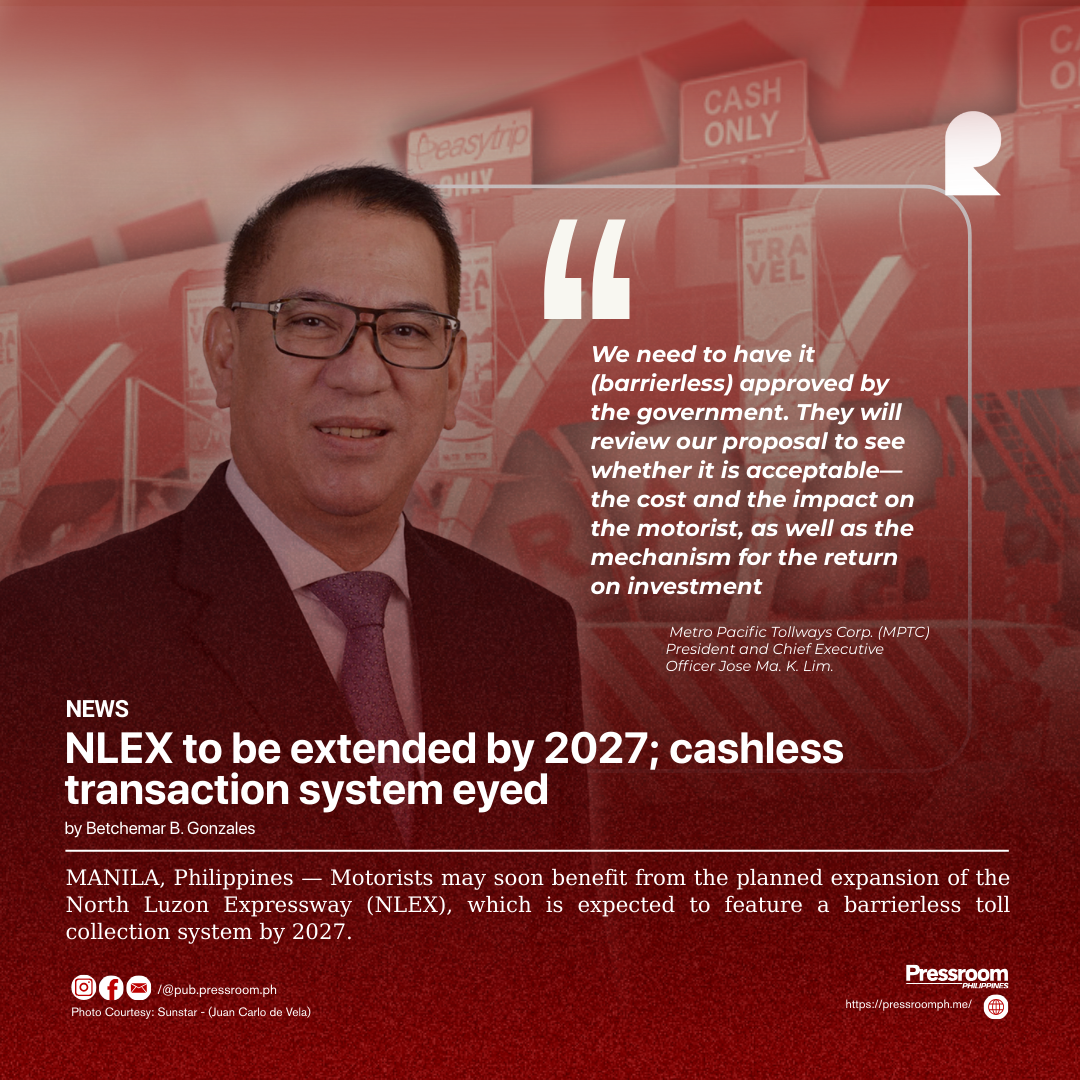The Department of Public Works and Highways (DPWH) has confirmed the existence of “ghost projects” in Bulacan, following reports of anomalies in flood control programs raised during a Senate inquiry.
DPWH Secretary Manuel Bonoan made the admission after Senator Jinggoy Estrada revealed that several municipalities under Bulacan’s 1st District—Hagonoy, Calumpit, and Malolos—had been flagged for questionable projects allegedly linked to Wawao Builders Corporation and SYMS Construction.
Bonoan said he could not recall SYMS Construction’s involvement but confirmed that Wawao Builders was awarded P9 billion worth of flood control projects nationwide, including 85 projects in Bulacan worth P5.971 billion.
He clarified that only some of these projects were reported as “ghost projects,” which are still being verified by the agency.
“Only some of these have been reported as ghost projects, and these are still under verification by our agency,” Bonoan clarified.
Estrada called on Wawao Builders president Mark Allan Villamor Arevalo to explain the allegations, but Arevalo failed to attend the hearing and did not respond to the Senate’s invitation.
Wawao Builders was among 15 contractors identified by the President on August 11 as having cornered 20 percent of the P849 billion allocated for 9,855 flood control projects from July 2022 to May 2025.
Bulacan—among the most flood-prone provinces in the country according to the 2023–2025 National Adaptation Plan (NAP)—was allocated 688 flood control projects, the highest number granted to any locality since 2022.
In a separate hearing, Senator Panfilo Lacson described Bulacan as the “most notorious” province for irregularities, citing 28 projects with identical costs but different technical specifications. The Office of the President raised similar findings in its initial review.
President Marcos earlier disclosed that P350 billion worth of projects, or about 6,021 flood control programs, lacked specific details on the type of mitigation structures being built.
Bonoan said he has since ordered the Bureau of Quality and Safety (BQS) and the Internal Audit Service (IAS) to send inspection teams to validate projects in Regions 3, 4A, 4B, 5, and 7.
Personnel reassignments have also begun in district engineering offices suspected of irregularities.
He assured lawmakers that the DPWH would cooperate with the inquiry, strengthen monitoring systems, and ensure that funds translate into “real and tangible” flood protection for communities.
However, questions over coordination remain. Senator Rodante Marcoleta criticized the absence of the River Basin Control Office (RBCO)—mandated under Executive Order No. 510 to help craft a national flood control master plan—saying it had been excluded from planning and implementation.
“Bakit po, in the entire continuum of this problem, hindi man lang nag-su-surface itong opisinang ito? Where is it? And why is it? Siya pala ang may mandato, ngayon lang natin nalaman,” Marcoleta said, questioning the RBCO’s disengagement.
The senator further criticized the Department of Budget and Management (DBM) and the DPWH for funding numerous projects without consulting the RBCO.
“Natutulog pala. Hindi pala niyo kinokonsulta. Ni hindi pala kayo magkakakilala,” he said.
The Senate’s motu proprio inquiry has since cast doubt on the DPWH’s project management and raised questions on whether its ballooning budget should instead be redirected to health and education.
Senator Bong Go earlier noted that DPWH funds are nearly three times larger than those allocated to the Department of Health.
As investigations continue, senators warned that without accountability, flooding in the country will remain not just a natural disaster—but also a reflection of systemic government failure.






